Class 12th Maths - Probability Case Study Questions and Answers 2022 - 2023
By QB365 on 08 Sep, 2022
QB365 provides a detailed and simple solution for every Possible Case Study Questions in Class 12 Maths Subject - Probability, CBSE. It will help Students to get more practice questions, Students can Practice these question papers in addition to score best marks.
QB365 - Question Bank Software
Probability Case Study Questions With Answer Key
12th Standard CBSE
-
Reg.No. :
Maths
-
Three friends A, B and C are playing a dice game. The numbers rolled up by them in their first three chances were noted and given by A = {1, 5},B = {2, 4, 5} and C = {1, 2, 5} as A reaches the cell 'SKIP YOUR NEXT TURN' in second throw.
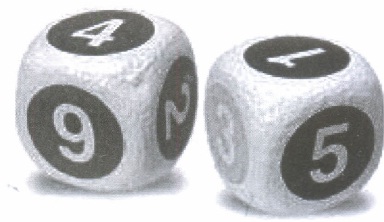
Based on the above information, answer the following questions.
(i) P (A I B) =\((a) \ \frac{1}{6}\) \((b) \ \frac{1}{3}\) \((c) \ \frac{1}{2}\) \((d) \ \frac{2}{3}\) (ii) P (B I C) =
\((a) \ \frac{2}{3}\) \((b) \ \frac{1}{12}\) \((c) \ \frac{1}{9}\) \((d) \ 0\) (iii) P (A ⋂ B I C) =
\((a) \ \frac{1}{6}\) \((b) \ \frac{1}{2}\) \((c) \ \frac{1}{12}\) \((d) \ \frac{1}{3}\) (iv) P (A I C) =
\((a) \ \frac{1}{4}\) \((b) \ 1\) \((c) \ \frac{2}{3}\) (d) None of these (v) P (A ∪ B I C) =
\((a) \ 0\) \((b) \ \frac{1}{2}\) \((c) \ \frac{2}{3}\) \((d) \ 1\) (a) -
In a play zone, Aastha is playing crane game. It has 12 blue balls, 8 red balls, 10 yellow balls and 5 green balls. If Aastha draws two balls one after the other without replacement, then answer the following questions.
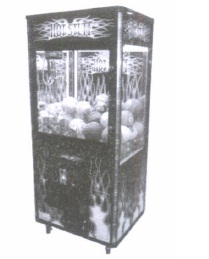
(i) What is the probability that the first ball is blue and the second ball is green?\((a) \ \frac{5}{119}\) \((b) \ \frac{12}{119}\) \((c) \ \frac{6}{119}\) \((d) \ \frac{5}{119}\) (ii) What is the probability that the first ball is yellow and the second ball is red?
\((a) \ \frac{6}{119}\) \((b) \ \frac{8}{119}\) \((c) \ \frac{24}{119}\) (d) None of these (iii) What is the probability that both the balls are red?
\((a) \ \frac{4}{85}\) \((b) \ \frac{24}{595}\) \((c) \ \frac{12}{119}\) \((c) \ \frac{64}{119}\) (iv) What is the probability that the first ball is green and the second ball is not yellow?
\((a) \ \frac{10}{119}\) \((b) \ \frac{6}{85}\) \((c) \ \frac{12}{119}\) (d) None of these (v) What is the probability that both the balls are not blue?
\((a) \ \frac{6}{595}\) \((b) \ \frac{12}{85}\) \((c) \ \frac{15}{17}\) \((d) \ \frac{253}{595}\) (a) -
Ajay enrolled himself in an online practice test portal provided by his school for better practice. Out of 5 questions in a set-I, he was able to solve 4 of them and got stuck in the one which is as shown below.
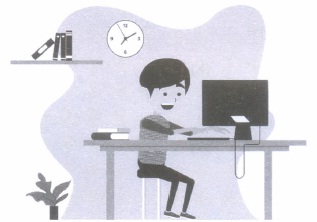
If A and B are independent events, P(A) = 0.6 and P(B) = 0.8, then answer the following questions.
(i) P (A \(\cap\) B) =(a) 0.2 (b) 0.9 (c) 0.48 (d) 0.6 (ii) P (A \(\cup\) B) =
(a) 0.92 (b) 0.08 (c) 0.48 (d) 0.64 (iii) P (B | A) =
(a) 0.14 (b) 0.2 (c) 0.6 (d) 0.8 (iv) P (A | B) =
(a) 0.6 (b) 0.9 (c) 0.19 (d) 0.11 (v) P ( not A and not B ) =
(a) 0.01 (b) 0.48 (c) 0.08 (d) 0.91 (a) -
A doctor is to visit a patient. From the past experience, it is known that the probabilities that he will come by cab, metro, bike or by other means of transport are respectively 0.3, 0.2, 0.1 and 0.4. The probabilities that he will be late are 0.25, 0.3, 0.35 and 0.1 if he comes by cab, metro, bike and other means of transport respectively.
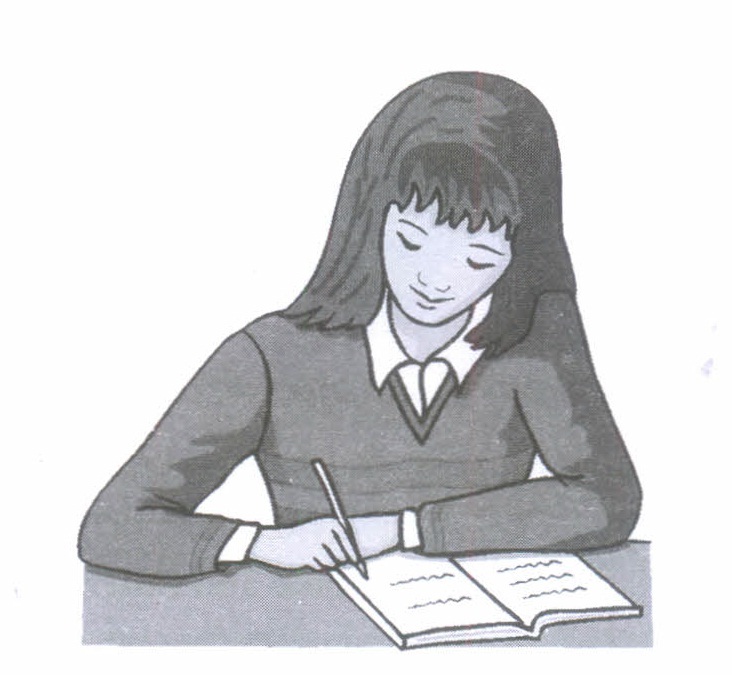
Based on the above information, answer the following questions.
(i) When the doctor arrives late, what is the probability that he comes by metro?\((a) \ \frac{5}{4}\) \((b) \ \frac{2}{7}\) \((c) \ \frac{5}{21}\) \((d) \ \frac{1}{6}\) (ii) When the doctor arrives late, what is the probability that he comes by cab?
\((a) \ \frac{4}{21}\) \((b) \ \frac{1}{7}\) \((c) \ \frac{5}{14}\) \((d) \ \frac{2}{21}\) (iii) When the doctor arrives late, what is the probability that he comes by bike?
\((a) \ \frac{5}{21}\) \((b) \ \frac{4}{7}\) \((c) \ \frac{5}{6}\) \((d) \ \frac{1}{6}\) (iv) When the doctor arrives late, what is the probability that he comes by other means of transport?
\((a) \ \frac{6}{7}\) \((b) \ \frac{5}{14}\) \((c) \ \frac{4}{21}\) \((d) \ \frac{2}{7}\) (v) What is the probability that the doctor is late by any means?
\((a) \ 1\) \((b) \ 0\) \((c) \ \frac{1}{2}\) \((d) \ \frac{1}{4}\) (a) -
Suman was doing a project on a school survey, on the average number of hours spent on study by students selected at random. At the end of-survey, Suman prepared the following report related to the data. Let X denotes the average number of hours spent on study by students. The probability that X can take the values x, has the following form, where k is some unknown constant.
\(P(X=x)=\left\{\begin{array}{l} 0.2, \text { if } x=0 \\ k x, \text { if } x=1 \text { or } 2 \\ k(6-x), \text { if } x=3 \text { or } 4 \\ 0, \text { otherwise } \end{array}\right.\)
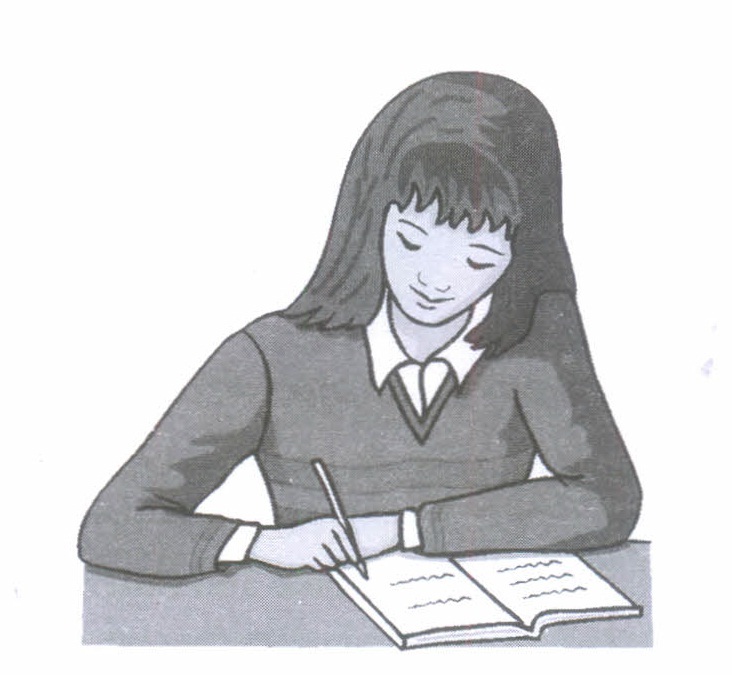
Based on the above information, answer the following questions.
(i) Find the value of k.(a) 0.1 (b) 0.2 (c) 0.3 (d) 0.05 (ii) What is the probability that the average study time of students is not more than 1 hour?
(a) 0.4 (b) 0.3 (c) 0.5 (d) 0.1 (iii) What is the probability that the average study time of students is at least 3 hours?
(a) 0.5 (b) 0.9 (c) 0.8 (d) 0.1 (iv) What is the probability that the average study time of students is exactly 2 hours?
(a) 0.4 (b) 0.5 (c) 0.7 (d) 0.2 (v) What is the probability that the average study time of students is at least 1 hour?
(a) 0.2 (b) 0.4 (c) 0.8 (d) 0.6 (a) -
On a holiday, a father gave a puzzle from a newspaper to his son Ravi and his daughter Priya. The probability of solving this specific puzzle independently by Ravi and Priya are \(\frac{1}{4}\) and \(\frac{1}{5}\) respectively.
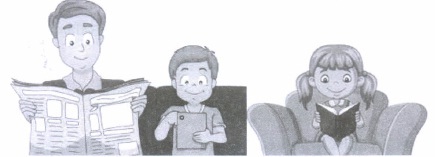
Based on the above information, answer the following questions.
(i) The chance that both Ravi and Priya solved the puzzle, is(a) 10% (b) 5% (c) 25% (d) 20% (ii) Probability that puzzle is solved by Ravi but not by Priya, is
(a) \(\frac{1}{2}\) (b) \(\frac{1}{5}\) (c) \(\frac{3}{5}\) (d) \(\frac{1}{3}\) (iii) Find the probability that puzzle is solved.
(a) \(\frac{1}{2}\) (b) \(\frac{1}{5}\) (c) \(\frac{2}{5}\) (d) \(\frac{5}{6}\) (iv) Probability that exactly one of them solved the puzzle, is
(a) \(\frac{1}{30}\) (b)\(\frac{1}{20}\) (c) \(\frac{7}{20}\) (d) \(\frac{3}{20}\) (v) Probability that none of them solved the puzzle, is
(a) \(\frac{1}{5}\) (b) \(\frac{3}{5}\) (c) \(\frac{2}{5}\) (d) None of these (a) -
A card is lost from a pack of 52 cards. From the remaining cards two cards are drawn at random.
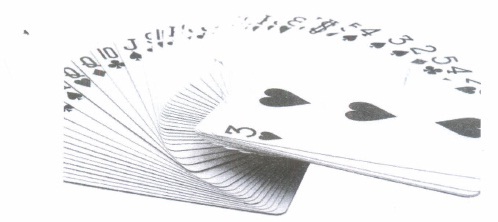
Based on the above information, answer the following questions.
(i) The probability of drawing two diamonds, given that a card of diamond is missing, isa) \(\frac{21}{425}\) (b) \(\frac{22}{425}\) (c) \(\frac{23}{425}\) (d) None of these (ii) The probability of drawing two diamonds, given that a card of heart is missing, is
a) \(\frac{26}{425}\) (b) \(\frac{22}{425}\) (c) \(\frac{19}{425}\) (d) \(\frac{23}{425}\) (iii) Let A be the event of drawing two diamonds from remaining 51 cards and E1, E2, E3 and E4 be the events that lost card is of diamond, club, spade and heart respectively, then the approximate value of \(\sum_{i=1}^{4} P\left(A \mid E_{i}\right) \text { is }\)
a) 0.17 (b) 0.24 (c) 0.25 (d) 0.18 (iv) All of a sudden, missing card is found and, then two cards are drawn simultaneously without replacement. Probability that both drawn cards are king is
a) \(\frac{1}{52}\) (b) \(\frac{1}{221}\) (c) \(\frac{1}{121}\) (d) \(\frac{2}{221}\) (v) If two cards are drawn from a well shuffled pack of 52 cards, one by one with replacement, then probability of getting not a king in 1st and 2nd draw is
a) \(\frac{144}{169}\) (b) \(\frac{12}{169}\) (c) \(\frac{64}{169}\) (d) None of these (a) -
One day, a sangeet mahotsav is to be organised in an open area of Rajasthan. In recent years, it has rained only 6 days each year. Also, it is given that when it actually rains, the weatherman correctly forecasts rain 80% of the time. When it doesn't rain, he incorrectly forecasts rain 20% of the time.
If leap year is considered, then answer the following questions
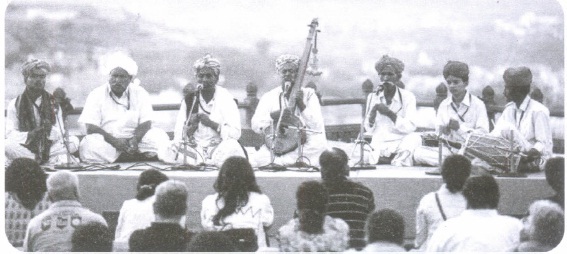
(i) The probability that it rains on chosen day isa) \(\frac{1}{366}\) (b) \(\frac{1}{73}\) (c) \(\frac{1}{60}\) (d) \(\frac{1}{61}\) (ii) The probability that it does not rain on chosen day is
a) \(\frac{1}{366}\) (b) \(\frac{5}{366}\) (c) \(\frac{360}{366}\) (d) None of these (iii) The probability that the weatherman predicts correctly is
a) \(\frac{5}{6}\) (b) \(\frac{7}{8}\) (c) \(\frac{4}{5}\) (d) \(\frac{1}{5}\) (iv) The probability that it will rain on the chosen day, if weatherman predict rain for that day, is
(a) 0.0625 (b) 0.0725 (c) 0.0825 (d) 0.0925 (v) The probability that it will not rain on the chosen day, if weatherman predict rain for that day, is
(a) 0.94 (b) 0.84 (c) 0.74 (d) 0.64 (a) -
In a family there are four children. All of them have to work in their family business to earn their livelihood at the age of 18.
Based on the above information, answer the following questions.
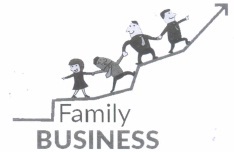
(i) Probability that all children are girls, if it is given that elder child is a boy, is(a) 3/8 (b) 1/8 (c) 5/8 (d) none of these (ii) Probability that all children are boys, if two elder children are boys, is
(a) 1/4 (b) 3/4 (c) 1/2 (d) none of these (iii) Find the probability that two middle children are boys, if it is given that eldest child is a girl.
(a) 0 (b) 3/4 (c) 1/4 (d) none of these (iv) Find the probability that all children are boys, if it is given that at most one of the children is a girl.
(a) 0 (b) 1/5 (c) 2/5 (d) 4/5 (v) Find the probability that all children are boys, if it is given that at least three of the children are boys.
(a) 1/5 (b) 2/5 (c) 3/5 d) 4/5 (a) -
To teach the application of probability a maths teacher arranged a surprise game for 5 of his students namely Archit, Aadya, Mivaan, Deepak and Vrinda. He took a bowl containing tickets numbered 1 to 50 and told the students go one by one and draw two tickets simultaneously from the bowl and replace it after noting the numbers.
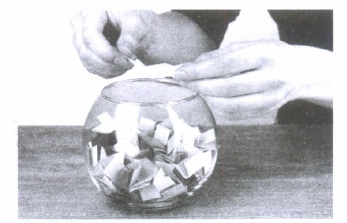
Based on the above information, answer the following questions
(i) Teacher ask Vrinda, what is the probability that both tickets drawn by Archit shows even number?(a) 1/50 (b) 12/49 (c) 13/49 (d) 15/49 (ii) Teacher ask Mivaan, what is the probability that both tickets drawn by Aadya shows odd number?
a) 1/50 (b) 2/49 (c) 12/49 (d) 5/49 (iii) Teacher ask Deepak, what is the probability that tickets drawn by Mivaan, shows a multiple of 4 on one ticket and a multiple 5 on other ticket?
a) 14/245 (b) 16/245 (c) 24/245 (d) None of these (iv) Teacher ask Archit, what is the probability that tickets are drawn by Deepak, shows a prime number on one ticket and a multiple of 4 on other ticket?
a) 3/245 (b) 17/245 (c) 18/245 (d) 36/245 (v) Teacher ask Aadya, what is the probability that tickets drawn by Vrinda, shows an even number on first ticket and an odd' number on second ticket?
a) 15/98 (b) 25/98 (c) 35/98 (d) none of these (a) -
A pharmaceutical company wants to advertise a new product on T.V, where the product is specially designed for women. For that an advertising executive is hired to study television-viewing habits of married couples during prime time hours. Based on past viewing records he has determined that during prime time husbands are watching television 70% of the time. It has also been determined that when the husband is watching television, 30% of the time the wife is also watching. When the husband is not watching television, 40% of the time the wife is watching television.
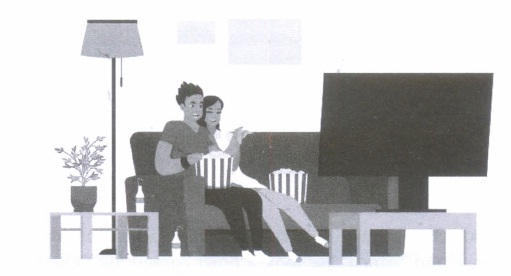
Based on the above information, answer the following questions.
(i) The probability that the husband is not watching television during prime time, is(a) 0.6 (b) 0.3 (c) 0.4 (d) 0.5 (ii) If the wife is watching television, the probability that husband is also watching television, is
(a) 2/11 (b) 7/11 (c) 5/11 (d) 8/11 (iii) The probability that both husband and wife are watching television during prime time, is
(a) 0.21 (b) 0.5 (c) 0.3 (d) 0.4 (iv) The probability that the wife is watching television during prime time, is
(a) 0.24 (b) 0.33 (c) 0.3 (d) 0.4 (v) If the wife is watching television, then the probability that husband is not watching television, is
(a) 2/11 (b) 4/11 (c) 1/11 (d) 5/11 (a) -
In a bilateral cricket series between India and South Africa, the probability that India wins the first match is 0.6. If India wins any match, then the probability that it wins the next match is 0.4, otherwise the probability is 0.3. Aso, it is given that there is no tie in any match
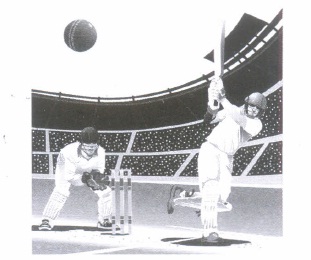
Based on the above information answer the following questions.
(i) The probability that India won the second match, if India has already loose the first match is(a) 0.5 (b) 0.3 (c) 0.4 (d) 0.7 (ii) The probability that India losing the third match, if India has already loose the first two matches is
(a) 0.2 (b) 0.3 (c) 0.4 (d) 0.7 (iii) The probability th-.at India losing the first two matches is
(a) 0.12 (b) 0.28 (c) 0.42 (d) 0.01 (iv) The probability that India winning the first three matches is
(a) 0.92 (b) 0.96 (c) 0.94 (d) 0.096 (v) The probability that India winning exactly one of the first three matches is
(a) 0.205 (b) 0.21 (c) 0.408 (d) 0.312 (a) -
A student is preparing for the competitive examinations LIC AAO, SSC CGL and Bank P.O. The probabilities that the student is selected independently in competitive examination of LIC AAO, SSC CGL and Bank P.O. are a, b and c respectively. Of these examinations, students has 50% chance of selection in at least one, 40% chance of selection in at least two and 30% chance of selection in exactly two examinations.
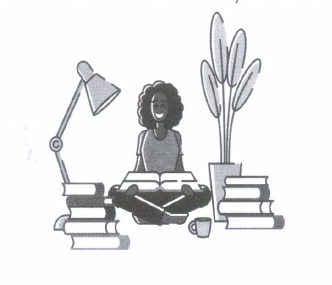
Based on the above information, answer the following questions.
(i) The value of a + b + c - ab - bc - ca + abc is(a) 0.3 (b) 0.5 (c) 0.7 (d) 0.6 (ii) The value of ab + bc + ac - 2abc is
(a) 0.5 (b) 0.3 (c) 0.4 (d) 0.6 (iii) The value of abc is
(a) 0.1 (b) 0.5 (c) 0.7 (d) 0.3 (iv) The value of ab + bc + dc is
(a) 0.1 (b) 0.6 (c) 0.5 (d) 0.3 (v) The value of a + b + c is
(a) 1 (b) 1.5 (c) 1.6 (d) 1.4 (a) -
A factory has three machines A, Band C to manufacture bolts. Machine A manufacture 30%, machine B manufacture 20% and machine C manufacture 50% of the bolts respectively. Out of their respective outputs 5%, 2% and 4% are defective. A bolt is drawn at random from total production and it is found to be defective.
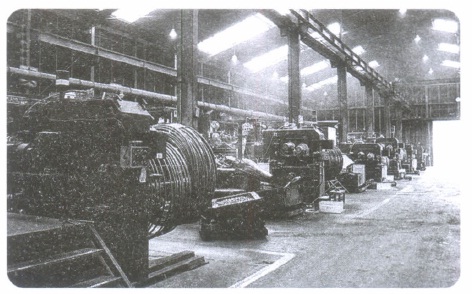
Based on the above information, answer the following questions.
(i) Probability that defective bolt drawn is manufactured by machine A, is(a) \(\frac{4}{13}\) (b)\(\frac{5}{13}\) (c) \(\frac{6}{13}\) (d) \(\frac{9}{13}\) (ii) Probability that defective bolt drawn is manufactured by machine B, is
(a) 0.3 (b) 0.1 (c) 0.2 (d) 0.4 (iii) Probability that defective bolt drawn is manufactured by machine C, is
(a) \(\frac{16}{39}\) (b)\(\frac{17}{39}\) (c) \(\frac{20}{39}\) (d) \(\frac{15}{39}\) (iv) Probability that defective bolt is not manufactured by machine B, is
(a) \(\frac{35}{39}\) (b)\(\frac{61}{39}\) (c) \(\frac{41}{39}\) (d) none of these (v) Probability that defective bolt is not manufactured by machine C, is
(a) 0.03 (b) 0.09 (c) 0.5 (d) 0.9 (a) -
Box I contains 1 white, 3 black and 2 red balls. Box II contains 2 white, 1 black and 3 red balls. Box III contains 3 white, 2 black and 1 red balls. One box is chosen at random and two balls are drawn with replacement.

If E1, E2, E3 be the events that the balls drawn from box 1,box II and box III respectively and E be the event that balls drawn are one white and one red, then answer the following questions.
(i) Probability of occurrence of everit E given that the balls drawn are from box I, is(a) \(\frac{1}{9}\) (b) \(\frac{2}{6}\) (c) \(\frac{3}{5}\) (d) \(\frac{1}{7}\) (ii) Probability of occurrence of event E, given that the balls drawn are from box II, is
(a) \(\frac{1}{3}\) (b) \(\frac{1}{4}\) (c) \(\frac{3}{4}\) (d) \(\frac{3}{5}\) (iii) Probability of occurrence of event E, given that balls drawn are from box III, is
(a) \(\frac{1}{12}\) (b) \(\frac{3}{11}\) (c) \(\frac{1}{6}\) (d) \(\frac{4}{11}\) (iv) The value of \(\sum_{i=1}^{3} P\left(E \mid E_{i}\right)\) is equal to
(a) \(\frac{5}{18}\) (b) \(\frac{1}{2}\) (c) \(\frac{1}{18}\) (d) \(\frac{11}{18}\) (v) The probability that the balls drawn are from box II, given that event E has already occurred, is
(a) \(\frac{1}{11}\) (b) \(\frac{6}{11}\) (c) \(\frac{5}{11}\) (d) None of these (a) -
Nisha and Ayushi appeared for first round of an interview for two vacancies. The probability of Nisha's selection is 1/3 and that of Ayushi's selection is 1/2.
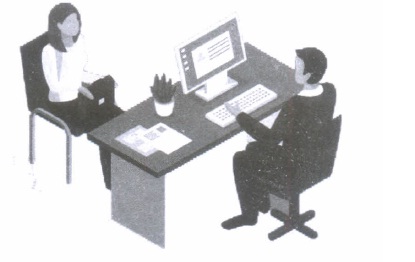
Based on the above information, answer the following questions.
(i) The probability that both of them are selected, is(a) \(\frac{1}{12}\) (b)\(\frac{1}{24}\) (c) \(\frac{1}{6}\) (d) \(\frac{1}{2}\) (ii) The probability that none of them is selected, is
(a) \(\frac{2}{7}\) (b)\(\frac{3}{8}\) (c) \(\frac{5}{8}\) (d) \(\frac{1}{3}\) (iii) The probability that only one of them is selected, is
(a) \(\frac{5}{8}\) (b)\(\frac{2}{3}\) (c) \(\frac{2}{5}\) (d) \(\frac{1}{2}\) (iv) The probability that atleast one of them is selected, is
(a) \(\frac{2}{3}\) (b)\(\frac{1}{8}\) (c) \(\frac{3}{5}\) (d) \(\frac{2}{5}\) (v) Suppose Nisha is selected by the manager and told her about two posts I and II for which selection is independent. If the probability of selection for post I is \(\frac{1}{6}\)and for post II is \(\frac{1}{5}\) then the probability that Nisha is selected for at least one post, is
(a) \(\frac{1}{3}\) (b)\(\frac{2}{3}\) (c) \(\frac{3}{8}\) (d) \(\frac{1}{2}\) (a) -
Varun and Isha decided to play with dice to keep themselves busy at home as their schools are closed due to coronavirus pandemic. Varun throw a dice repeatedly until a six is obtained. He denote the number of throws required by X.
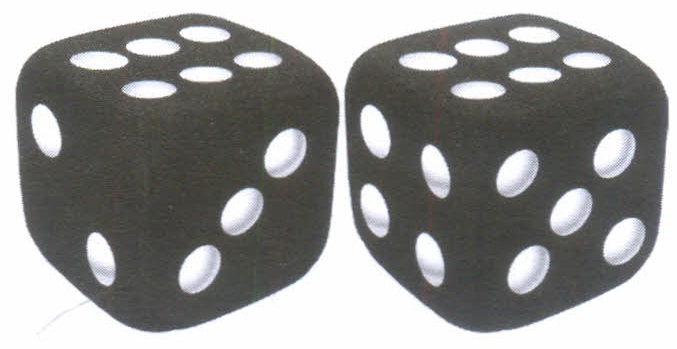
Based on the above information, answer the following questions.
(i) The probability that X = 2 equals(a) \(\frac{1}{6}\) (b) \(\frac{5}{6^2}\) (c) \(\frac{5}{3^6}\) (d) \(\frac{1}{6^3}\) (ii) The probability that X = 4 equals
(a) \(\frac{1}{6^4}\) (b) \(\frac{1}{6^6}\) (c) \(\frac{5^3}{6^4}\) (d) \(\frac{5}{6^4}\) (iii) The probability that X ≥ 2 equals
(a) \(\frac{25}{216}\) (b) \(\frac{1}{36}\) (c) \(\frac{5}{6}\) (d) \(\frac{25}{36}\) (iv) The value of P(X ≥ 6) is
(a) \(\frac{5^5}{6^4}\) (b) \(1-\frac{5^3}{6^5}\) (c) \(\frac{5^3 \times 61}{6^5}\) (d) \(\frac{5^3}{6^4}\) (v) The probability that X > 3 equals
(a) \(\frac{36}{25}\) (b) \(\frac{5^3}{6^5}\) (c) \(\frac{5}{6}\) (d) \(\frac{5^3}{6^3}\) (a) -
In pre-board examination of class XII, commerce stream with Economics and Mathematics of a particular school, 50% of the students failed in Economics, 35% failed in Mathematics and 25% failed in both Economics and Mathematics. A student is selected at random from the class.
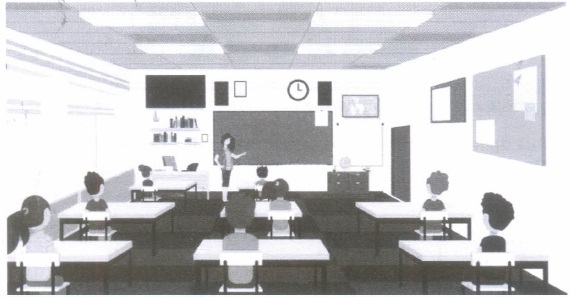
Based on the above information, answer the following questions
(i) The probability that the selected student has- failed in Economics, if it is known that he has failed in Mathematics, is(a) \(\frac{3}{10}\) (b) \(\frac{12}{25}\) (c) \(\frac{1}{4}\) (d) \(\frac{5}{7}\) (ii) The probability that the selected student has failed in Mathematics, if it is known that he has failed in Economics, is
(a) \(\frac{22}{25}\) (b) \(\frac{12}{25}\) (c) \(\frac{1}{2}\) (d) \(\frac{3}{25}\) (iii) The probability that the selected student has passed in at least one of the two subjects, is
(a) \(\frac{1}{4}\) (b) \(\frac{1}{2}\) (c) \(\frac{3}{4}\) (d) None of these (iv) The probability that the selected student has failed in at least one of the two subjects, is
(a) \(\frac{3}{5}\) (b) \(\frac{22}{25}\) (c) \(\frac{2}{5}\) (d) \(\frac{43}{100}\) (v) The probability that the selected student has passed in Mathematics, if it is known that he has failed in Economics, is
(a) \(\frac{2}{5}\) (b) \(\frac{3}{4}\) (c) \(\frac{1}{3}\) (d) \(\frac{1}{2}\) (a) -
In a wedding ceremony, consists of father, mother, daughter and son line up at random for a family photograph, as shown in figure.
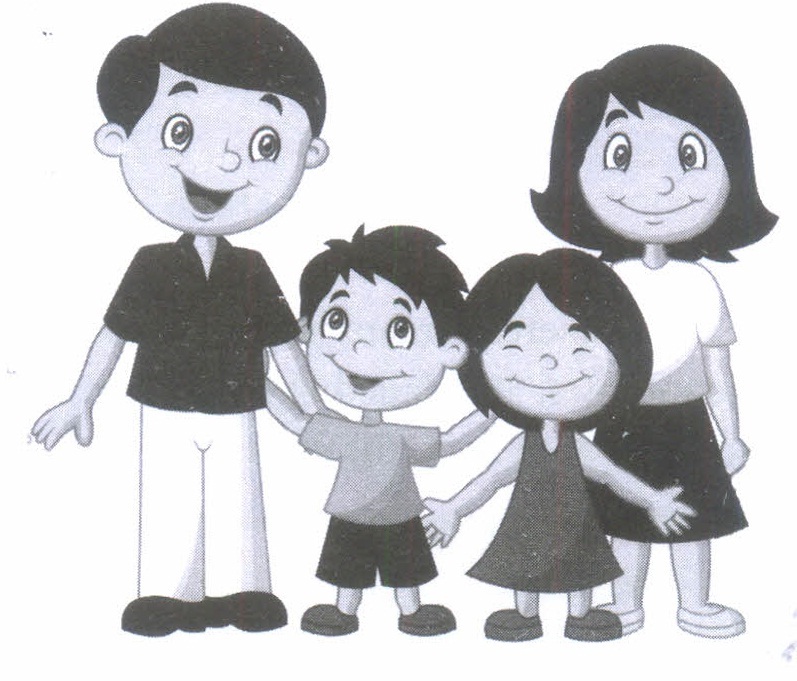
Based on the above information, answer the following questions.
(i) Find the probability that daughter is at one end, given that father and mother are in the middle.(a) 1 (b) \(\frac{1}{2}\) (c) \(\frac{1}{3}\) (d) \(\frac{2}{3}\) (ii) Find the probability that mother is at right end, given that son and daughter are together.
(a) \(\frac{1}{2}\) (b) \(\frac{1}{3}\) (c) \(\frac{1}{4}\) (d) 0 (iii) Find the probability that father and mother are in the middle, given that son is at right end.
(a) \(\frac{1}{4}\) (b) \(\frac{1}{2}\) (c) \(\frac{1}{3}\) (d) \(\frac{2}{3}\) (iv) Find the probability that father and son are standing together, given that mother and daughter are standing together.
(a) 0 (b) 1 (c) \(\frac{1}{2}\) (d) \(\frac{2}{3}\) (v) Find the probability that father and mother are on either of the ends, given that son is at second position from the right end.
(a) \(\frac{1}{3}\) (b) \(\frac{2}{3}\) (c) \(\frac{1}{4}\) (d) \(\frac{2}{5}\) (a) -
Between students of class XII of two schools A and B basketball match is organised. For which, a team from each school is chosen, say T1 be the team of school A and T2 be the team of school B. These teams have to play two games against each other. It is assumed that the outcomes of the two games are independent. The probability of T1 winning, drawing an d losing a game against T2 are \(\frac{1}{2}, \frac{3}{10} \text { and } \frac{1}{5}\) respectively
Each team gets 2 points for a win, 1 point for a draw and 0 point for a loss in a game.
Let X and Y denote the total points scored by team A and B respectively, after two games.
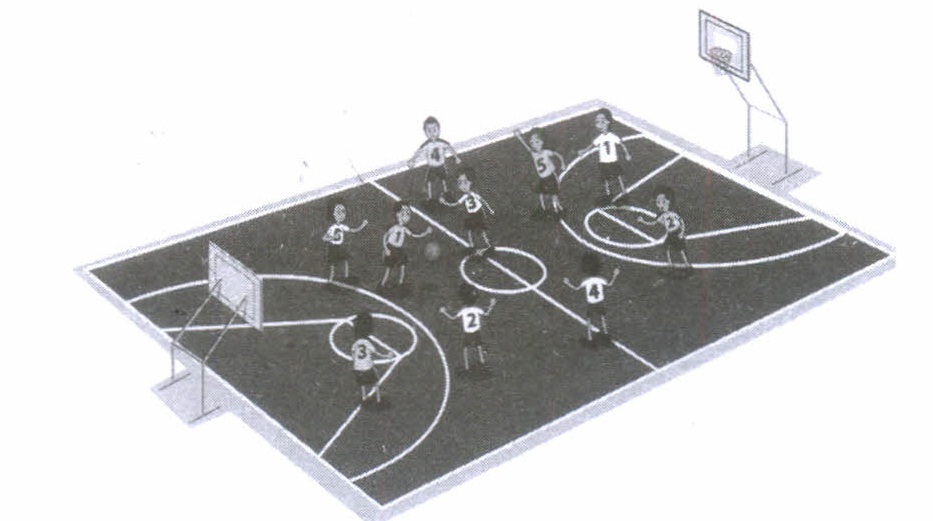
Based on the above information, answer the following questions.
(i) P(T2 winning a match against T1) is equal to(a) 1/5 (b) 1/6 (c) 1/3 (d) none of these (ii) P(T2 drawing a match against T1) is equal to
(a) 1/2 (b) 1/3 (c) 1/6 (d) 3/10 (iii) P(X > Y) is equal to
(a) 1/4 (b) 5/12 (c) 1/20 (d) 11//20 (iv) P(X = Y) is equal to
(a) 11/100 (b) 1/3 (c) 29/100 (d) 1/2 (v) P(X + Y = 8) is equal to
(a) 0 (b) 5/12 (c) 13/36 (d) 7/12 (a) -
In an office three employees Vinay, Sonia and Iqbal process incoming copies of a certain form. Vinay process 50% of the forms, Sonia processes 20% and Iqbal the remaining 30% of the forms. Vinay has an error rate of 0.06, Sonia has an error rate of 0.04 and Iqbal has an error rate of 0.03.
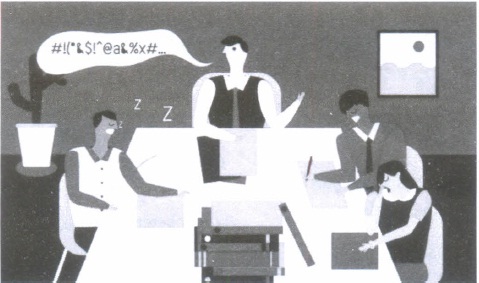
Based on the above information, answer the following questions.
(i) The conditional probability that an error is committed in processing given that Sonia processed the form is(a) 0.0210 (b) 0.04 (c) 0.47 (d) 0.06 (ii) The probability that Sonia processed the form and committed an error is
(a) 0.005 (b) 0.006 (c) 0.008 (d) 0.68 (iii) The total probability of committing an error in processing the form is
(a) 0 (b) 0.047 (c) 0.234 (d) 1 (iv) The manager of the company wants to do a quality check. During inspection he selects a form at random from the days output of processed forms: If the form selected at random has an error, the probability that the form is NOT processed by Vinay is
(a) 1 (b) \(\frac{30}{47}\) (c) \(\frac{20}{47}\) (d) \(\frac{17}{47}\) (v) Let A be the event of committing an error in processing the form and let E1, E2 and E3 be the events that Vinay, Sonia and Iqbal processed the form. The value of \(\sum_{i=1}^{3} P\left(E_{i} \mid A\right) \text { is }\)
(a) 0 (b) 0.03 (c) 0.06 (d) 1 (a)
Case Study
*****************************************
Answers
Probability Case Study Questions With Answer Key Answer Keys
-
Here, sample space = {1, 2, 3,4,5, 6}, A ⋂ B = {5}, B ⋂ C = {2, 5}, A ⋂ C = {1, 5}, A ⋂ B ⋂ C = {5} and {A U B} ⋂ C = {1, 2, 5}
Also, \(P(A)=\frac{2}{6}, P(B)=\frac{3}{6}, P(C)=\frac{3}{6}\)
\(P(A \cap B)=\frac{1}{6}, P(B \cap C)=\frac{2}{6}, P(A \cap C)=\frac{2}{6} \)
\(P(A \cap B \cap C)=\frac{1}{6} \text { and } P((A \cup B) \cap C)=\frac{3}{6}\)
\((i) \ (\mathbf{b}): P(A \mid B)=\frac{P(A \cap B)}{P(B)}=\frac{1 / 6}{3 / 6}=\frac{1}{3}\)
\((ii) \ (a): P(B \mid C)=\frac{P(B \cap C)}{P(C)}=\frac{2 / 6}{3 / 6}=\frac{2}{3}\)
\((iii) \ (\mathrm{d}): P(A \cap B \mid C)=\frac{P(A \cap B \cap C)}{P(C)}=\frac{1 / 6}{3 / 6}=\frac{1}{3}\)
\((iv) \ (c): P(A \mid C)=\frac{P(A \cap C)}{P(C)}=\frac{2 / 6}{3 / 6}=\frac{2}{3}\)
\( (v) \ (\mathbf{d}): P(A \cup B \mid C)=\frac{P((A \cup B) \cap C)}{P(C)}=\frac{3 / 6}{3 / 6}=1\) -
Let B, R, Y and G denote the events that ball drawn is blue, red, yellow and green respectively.
\(\therefore P(B)=\frac{12}{35}, P(R)=\frac{8}{35}, P(Y)=\frac{10}{35} \text { and } P(G)=\frac{5}{35}\)
\((i) \ (c): P(G \cap B)=P(B) \cdot P(G \mid B)=\frac{12}{35} \cdot \frac{5}{34}=\frac{6}{119}\)
\((ii) \ (\mathbf{b}): P(R \cap Y)=P(Y) \cdot P(R \mid Y)=\frac{10}{35} \cdot \frac{8}{34}=\frac{8}{119}\)
(iii) (a): Let E = event of drawing a first red ball and
F = event of drawing a second red ball
Here, \(P(E)=\frac{8}{35} \text { and } P(E)=\frac{7}{34}\)
\(\therefore \P(F \cap E)=P(E) \cdot P(F \mid E)=\frac{8}{35} \cdot \frac{7}{34}=\frac{4}{85}\)
\(\text {(iv) }(c): P\left(Y^{\prime} \cap G\right)=P(G) \cdot\left(Y^{\prime} \mid G\right)=\frac{5}{35} \cdot \frac{24}{34}=\frac{12}{119}\)
(v) (d): Let E = event of drawing a first non-blue ball and F = event of drawing a second non-blue ball
Here, \(P(E)=\frac{23}{35} \text { and } P(F)=\frac{22}{34}\)
\(\therefore \ P(F \cap E)=P(E) \cdot P(F \mid E)=\frac{23}{35} \cdot \frac{22}{34}=\frac{253}{595}\) -
Here, P(A) = 0.6 and P(B) = 0.8
\(\text { (i) } \ (c): P(A \cap B)=P(A) \cdot P(B)=(0.6)(0.8)=0.48\)
\(\text { (ii) }(\text { a) }: P(A \cup B)=P(A)+P(B)-P(A \cap B)\)
= 0.6 + 0.8 - 0.48 = 0.92
(iii) (d): P(B I A) = P(B) (\(\because\)A and B are independent)
= 0.8
(iv) (a): p (A I B) = p(A) (\(\because\)A and B are independent)
= 0.6
(v) (c) : P(not A and not B) = \(P\left(A^{\prime} \cap B^{\prime}\right)=P(A \cup B)^{\prime}\)
\(=1-P(A \cup B)=1-0.92=0.08\) -
Let E be the event that the doctor visit the patient late and let A1, A2, A3, A4 be the events that the doctor comes by cab, metro, bike and other means of transport respectively.
\(P\left(A_{1}\right)=0.3, P\left(A_{2}\right)=0.2, P\left(A_{3}\right)=0.1, P\left(A_{4}\right)=0.4\)
P(E I A1) = Probability that the doctor arriving late when he comes by cab = 0.25
Similarly, P ( E I A2) = 0.3, P (E I A3) = 0.35 and P ( E I A3) = 0.1
(i) (b): P(A2 | E) = Probability that the doctor arriving late and he comes by metro
\(=\frac{P\left(A_{2}\right) P\left(E \mid A_{2}\right)}{\sum P\left(A_{i}\right) P\left(E \mid A_{i}\right)}\)
\(=\frac{(0.2)(0.3)}{(0.3)(0.25)+(0.2)(0.3)+(0.1)(0.35)+(0.4)(0.1)}\)
\(=\frac{0.06}{0.21}=\frac{2}{7}\)
(ii) (c): P(A1 | E) = Probability that the doctor arriving late and he comes by cab
\(=\frac{P\left(A_{1}\right) P\left(E \mid A_{1}\right)}{\Sigma P\left(A_{i}\right) P\left(E \mid A_{i}\right)}\)
\(=\frac{(0.3)(0,25)}{(0.3)(0.25)+(0.2)(0.3)+(0.1)(0.35)+(0.4)(0.1)}\)
\(=\frac{0.075}{0.21}=\frac{5}{14}\)
(iii) (d): P(A3| E) = Probability that the doctor arriving late and he comes by bike
\(=\frac{P\left(A_{3}\right) P\left(E \mid A_{3}\right)}{\sum P\left(A_{i}\right) P\left(E \mid A_{i}\right)}\)
\(=\frac{(0.1)(0.35)}{(0.3)(0.25)+(0.2)(0.3)+(0.1)(0.35)+(0.4)(0.1)}\)
\(=\frac{0.035}{0.21}=\frac{1}{6}\)
(iv) (c): P(A4 | E) = Probability that the doctor arriving late and he comes by other means of transport
\(=\frac{P\left(A_{4}\right) P\left(E \mid A_{4}\right)}{\Sigma P\left(A_{i}\right) P\left(E \mid A_{i}\right)}\)
\(=\frac{(0.4)(0.1)}{(0.3)(0.25)+(0.2)(0.3)+(0.1)(0.35)+(0.4)(0.1)}\)
\(=\frac{0.04}{0.21}=\frac{4}{21}\)
(v) (a): Probability that the doctor is late by any means
\(=\frac{2}{7}+\frac{5}{14}+\frac{1}{6}+\frac{4}{21}=1\) -
(i) (a): We know that \(\Sigma P_{i}=1\)
Then 0.2 + k + 2k + 3k + 2k + 0 = 1
\(\Rightarrow\) 8k = 1 - 0.2 = 0.8 \(\Rightarrow\) k = 0.1
(ii) (b): P(Average study time is not more than 1 hour)
= P(X ≤ 1) = P(X = 0) + P(X = 1) = 0.2 + 0.1 = 0.3
(iii) (a): P(Average study time is at least 3 hours)
P(X ≥ 3) = P(X = 3) + P(X = 4) = 0.3 + 0.2 = 0.5
(iv) (d): P(Average study time is exactly 2 hours)
= P(X = 2) = 0.2
(v) (c): P(Average study time is at least 1 hour)
= 1 - P(X = 0) = 1 - 0.2 = 0.8 -
Let E1 be the event that Ravi solved the puzzle and
E2 be the event that Priya solved the puzzle
Then, p(E1) = 1/4 and P(E2) = 1/5
(i) (b): Since, E1 and E2 are independent events.
∴ P(both solved the puzzle) \(=P\left(E_{1} \cap E_{2}\right)\)
\(=P\left(E_{1}\right) \cdot P\left(E_{2}\right)=\frac{1}{4} \times \frac{1}{5}=\frac{1}{20}=\frac{1}{20} \times 100 \%=5 \%\)
(ii) (b): P(puzzle is solved by Ravi but not by Priya)
\(=P\left(\bar{E}_{2}\right) P\left(E_{1}\right)=\left(1-\frac{1}{5}\right) \cdot \frac{1}{4}=\frac{4}{5} \cdot \frac{1}{4}=\frac{1}{5}\)
(iii) (c) : P(puzzle is solved) = P(E1 or E2)
\(=P\left(E_{1} \cup E_{2}\right)=P\left(E_{1}\right)+P\left(E_{2}\right)-P\left(E_{1} \cap E_{2}\right)\)
\(=\frac{1}{4}+\frac{1}{5}-\frac{1}{20}=\frac{8}{20}=\frac{2}{5}\)
(iv) (c): P(Exactly one of them solved the puzzle)
\(=P\left[\left(E_{1} \text { and } \bar{E}_{2}\right) \operatorname{or}\left(E_{2} \text { and } \bar{E}_{1}\right)\right] \)
\(=P\left(E_{1} \cap \bar{E}_{2}\right)+P\left(E_{2} \cap \bar{E}_{1}\right) \)
\(=P\left(E_{1}\right) \times P\left(\bar{E}_{2}\right)+P\left(E_{2}\right) \times P\left(\bar{E}_{1}\right) \)
\(=\frac{1}{4} \times \frac{4}{5}+\frac{1}{5} \times \frac{3}{4} \quad\left[\because P\left(\bar{E}_{1}\right)=1-P\left(E_{1}\right)\right] \)
\(=\frac{4}{20}+\frac{3}{20}=\frac{7}{20}\)
(v) (b): P(none of them solved the puzzle)
\(=P\left(\bar{E}_{1} \cap \bar{E}_{2}\right)=P\left(\bar{E}_{1}\right) \cdot P\left(\bar{E}_{2}\right)=\frac{3}{4} \times \frac{4}{5}=\frac{3}{5}\) -
(i) (b): Required probability = \(\frac{{ }^{12} C_{2}}{{ }^{51} C_{2}}\)
\(=\frac{12 \times 11}{51 \times 50}=\frac{22}{425}\)
(ii) (a): Required probability = \(\frac{{ }^{13} C_{2}}{{ }^{51} C_{2}}=\frac{13 \times 12}{51 \times 50}=\frac{26}{425}\)
(iii) (b): Clearly, P(A l E1) = \(\frac{{ }^{12} C_{2}}{{ }^{51} C_{2}}=\frac{22}{425}\)
\(P\left(A \mid E_{2}\right)=\frac{{ }^{13} C_{2}}{{ }^{51} C_{2}}=\frac{26}{425} \)
\(P\left(A \mid E_{3}\right)=P\left(A \mid E_{4}\right)=\frac{26}{425}\)
\(\therefore \sum_{i=1}^{4} P\left(A \mid E_{i}\right)=\frac{22}{425}+\frac{26}{425}+\frac{26}{425}+\frac{26}{425}=\frac{100}{425}=0.24\)
(iv) (b): P(getting both king) = \(\frac{{ }^{4} C_{2}}{{ }^{52} C_{2}}=\frac{4 \times 3}{52 \times 51}=\frac{1}{221}\)
(v) (a): P(drawing a king) = \(\frac{4}{52}=\frac{1}{13}\)
\( \therefore \quad P(\text { not drawing a king })=1-\frac{1}{13}=\frac{12}{13} \)
\(\therefore \quad \text { Required probability }=\frac{12}{13} \times \frac{12}{13}=\frac{144}{169}\) -
(i) (d): Since, it rained only 6 days each year, therefore, probability that it rains on chosen day is \(\frac{6}{366}=\frac{1}{61}\)
(ii) (c): The probability that it does not rain on chosen day = \(1-\frac{1}{61}=\frac{60}{61}=\frac{360}{366}\)
(iii) (c): It is given that, when it actually rains, the weatherman correctly forecasts rain 80% of the time.
Required probability \( =\frac{80}{100}=\frac{8}{10}=\frac{4}{5}\)
(iv) (a): Let A1 be the event that it rains on chosen day, A2 be the event that it does not rain on chosen day and E be the event the weatherman predict rain.
Then we have, P(A1) \(=\frac{6}{366}, P\left(A_{2}\right)=\frac{360}{366},\)
\(P\left(E \mid A_{1}\right)=\frac{8}{10} \text { and } P\left(E \mid A_{2}\right)=\frac{2}{10}\)
Required probability = P(A1 I E)
\(=\frac{P\left(A_{1}\right) \cdot P\left(E \mid A_{1}\right)}{P\left(A_{1}\right) \cdot P\left(E \mid A_{1}\right)+P\left(A_{2}\right) \cdot P\left(E \mid A_{2}\right)}\)
\(=\frac{\frac{6}{366} \times \frac{8}{10}}{\frac{6}{366} \times \frac{8}{10}+\frac{360}{366} \times \frac{2}{10}}=\frac{48}{768}=0.0625\)
(v) (a): Required probability = 1 - P(A1 I E)
= 1 - 0.0625 = 0.9375 ≈ 0.94. -
Let B and G denote the boy and girl respectively. If a family has 4 children then each of four children can either boy or girl.
Sample space is given by
S = {BBBB, BBBG, BBGB, BGBB, BBGG, BGBG, BGGB, BGGG,GBBB,GBBG,GBGB,GBGG,GGBB,GGBG, GGGB, GGGG}
(i) (d): Let E = All children are girls.
ஃ E = {GGGG} i.e., n(E) = 1
F = Elder child is a boy
ஃ F = {BBBB, BBBG, BBGB, BGBB, BBGG, BGBG, BGGB, BGGG} i.e., n(F) = 8
Now, n(EറF) = 0
\(\therefore P(E \mid F)=\frac{(E \cap F)}{n(F)}=0\)
(ii) (a): Let E = All are boys
ஃ E = {BBBB} i.e., n(E) = 1
F = Two elder children are boys
ஃ F = {BBBB, BBBG, BBGB, BBGG} i.e., n(F) = 4
Now, n(EറF) = 1
\(\therefore P(E \mid F)=\frac{n(E \cap F)}{n(F)}=\frac{1}{4}\)
(iii) (c) : Let E = Two middle children are boys.
ஃ E = {BBBB, BBBG, GBBB, GBBG} i.e., n(E) = 4
F = Eldest child is a girl
ஃ F = {GBBB, GBBG, GBGB, GBGG, GGBB, GGBG, GGGB, GGGG} i.e., n(F) = 8
Now, n(EറF) = 2
\(\therefore P(E \mid F)=\frac{2}{8}=\frac{1}{4}\)
(iv) (b): Let E = All are boys.
ஃ E = {BBBB} i.e., n(E) = 1
F = At most one child is girl.
ஃ F = {BBBB, BBBG, BBGB, BGBB, GBBB}
i.e., n(F) = 5
now, \(n(E \cap F)=1\)
\(\therefore P(E \mid F)=\frac{1}{5}\)
(v) (a): Let E = All are boys.
ஃ E = {BBBB} i.e., n (E) = 1
F = At least three of the children are boys.
ஃ F = {BBBB, BBBG, BBGB, BGBB, GBBB} i.e., n(F) = 5
Now, n(EറF) = 1
\(\therefore P(E \mid F)=\frac{1}{5}\) -
(i) (b): Total number of tickets = 50
Let event A = First ticket shows even number and B = Second ticket shows even number
Now, P(Both tickets show even number) = P(A)・P(B | A)
\(=\frac{25}{50} \cdot \frac{24}{49}=\frac{12}{49}\)
(ii) (c): Let the event A = First ticket shows odd number and B = Second ticket shows odd number
P (Both tickets show odd number)
\(=\frac{25}{50} \times \frac{24}{49}=\frac{12}{49}\)
(iii) (c): Required probability = P(one number is a multiple of 4 and other is a multiple of 5)
= P(multiple of 5 on first ticket and multiple of 4 on second ticket) + P(multiple of 4 on first ticket and multiple of 5 on second ticket)
\(=\frac{10}{50} \cdot \frac{12}{49}+\frac{12}{50} \times \frac{10}{49}=\frac{12}{245}+\frac{12}{245}=\frac{24}{245}\)
(iv) (d): Required probability = P(one ticket with prime number and other ticket with a multiple of 4)
\(=2\left(\frac{15}{50} \times \frac{12}{49}\right)=\frac{36}{245}\)
(v) (b): Let the event A = First ticket shows even number and B = Second ticket shows odd number.
Now, P(First ticket shows an even number and second ticket shows an odd number) = P(A)・P(B | A)
\(=\frac{25}{50} \times \frac{25}{49}=\frac{25}{98}\) -
(i) (b): Since, it is given that during prime time husband is watching T.V. 70%of the time
∴ Required probability = 1 - P(husband is watching television during prime time)
= 1 - 0.7 = 0.3
(ii) (b): Let H be the event that husband is watching TV, W be the event that wife is watching TV.
Then, P(H) = 0.7, P(H) = 0.3
P(W I H) = 0.3 arltl P(W I H) = 0.4
∴ Required probability = P(H I W)
\(=\frac{P(\mathrm{H}) \cdot P(\mathrm{~W} \mid \mathrm{H})}{P(\mathrm{H}) \cdot P(\mathrm{~W} \mid \mathrm{H})+P(\overline{\mathrm{H}}) P(\mathrm{~W} \mid \overline{\mathrm{H}})} \)
\(=\frac{0.7 \times 0.3}{0.7 \times 0.3+0.4 \times 0.3}=\frac{0.21}{0.33}=\frac{7}{11}\)
(iii) (a) : Required probability = P(H \(\cap\) W)
= P(H)P(W I H) = 0.7 x 0.3 = 0.21
(iv) (b): Required probability = P(W) = \(\frac{P(\mathrm{H} \cap \mathrm{W})}{P(\mathrm{H} \mid \mathrm{W})}\)
\(=\frac{0.21}{7 / 11}=\frac{21}{100} \times \frac{11}{7}=\frac{33}{100}=0.33\)
(v) (b): Required probability = P(H I W)
\(=1-P(\mathrm{H} \mid \mathrm{W})=1-\frac{7}{11}=\frac{4}{11}\) -
(i) (c): It is given that if India loose any match, then the probability that it wins the next match is 0.3.
∴ Required probability = 0.3
(ii) (d): It is given that, if India loose any match, then the probability that it wins the next match is 0.3.
∴ Required probability = 1 - 0.3 = 0.7
(iii) (b): Required probability = P(lndia losing first match) . P(India losing second match when India has already lost first match)
= 0.4 x 0.7 = 0.28
(iv) (d): Required probability = P(lndia winning first match) . P(India winning second match if India has already won first match) P(lndia winning third match if India has already won first two matches)
= 0.6 x 0.4 x 0.4 = 0.096
(v) (c): Required probability = P(Win 1st match) P(Lose 2nd match) P(Lose 3rd match) + P (Lose 1st match) P(Win 2nd match) P(Lose 3rd match) + P(Lose 1st match) P(Lose 2nd match) P(Win 3rd match)
= 0.6 x (1 - 0.4)・(1- 0.3) + (1 - 0.6)・(0.3)(1 - 0.4) + (1 - 0.6) (1 - 0.3) (0.3)
= 0.6 x 0.6 x 0.7 + 0.4 x 0.3 x 0.6 + 0.4 x 0.7 x 0.3
= 0.252 + 0.072 + 0.084 = 0.408 -
Let A be the event that the student is selected for LIC AAO, B be the event that the student is selected for SSC CGL and C be the event that the student is selected for Bank P.O.
Then, P(A) = a; P(B) = band P(C) = c
(i) (b): We have, \(P(A \cup B \cup C)=0.5\)
\(\Rightarrow \ 1-P(\overline{A \cup B \cup C})=0.5 \)
\(\Rightarrow 1-P(\bar{A} \cap \bar{B} \cap \bar{C})=0.5 \)
\(\Rightarrow 1-P(\bar{A}) \cdot P(\bar{B}) \cdot P(\bar{C})=0.5 \)
\(\Rightarrow\) 1 - (I - a) (1 - b) (1 - c) = 0.5
\(\Rightarrow\) 1 - [ (I - a - b + ab )(1 - c)] = 0.5
\(\Rightarrow\) 1 - [1 - c - a + ac - b + bc + ab - abc] = 0.5
\(\Rightarrow\) a + b + c - ab - bc - ca + abc = 0.5 .......(i)
(ii) (c): We have, P(selection in at least two competitive exams) = 0.4
\( \Rightarrow \ P(A \cap B \cap \bar{C})+P(\bar{A} \cap B \cap C)+P(A \cap \bar{B} \cap C)+ P(A \cap B \cap C)=0.4 \)
\(\Rightarrow\) ab(1 - c) + (1 - a)bc + a(1 - b)c + abc = 0.4
\(\Rightarrow\) ab - abc + bc - abc + ac - abc + abc = 0.4
\(\Rightarrow\) ab + bc + ac - 2abc= 0.4 ......................(ii)
(iii) (a) : We have, P(selection in exactly two examinations) = 0.3
\(\Rightarrow P(A \cap B \cap \bar{C})+P(\bar{A} \cap B \cap C)+P(A \cap \bar{B} \cap C)=0.3\)
\(\Rightarrow\) ab(1 - c) + (1 - a)bc + a(1 - b)c = 0.3
\(\Rightarrow\) ab + bc + ac - 3abc = 0.3 ...................(iii)
On subtracting (iii) from (ii), we get
abc = 0.1
(iv) (b): On substituting the value of abe in (ii), we get
ab + bc + ac = 0.6
(v) (a): On substituting the value of ab + bc + ac and
abc in (i), we get
a + b + c - 0.6 + 0.1 = 0.5
\(\Rightarrow\) a + b + c = 1 -
Let E1, E2, E3 be the events of drawing a bolt produced by machine A, B and C, respectively.
Then \(P\left(E_{1}\right)=\frac{30}{100}=\frac{3}{10}, P\left(E_{2}\right)=\frac{20}{100}=\frac{1}{5}\) and \(P\left(E_{3}\right)=\frac{50}{100}=\frac{1}{2}\)
Also, let E be the event of drawing a defective bolt.
Then \(P\left(E \mid E_{1}\right)=\frac{5}{100}=\frac{1}{20}, P\left(E \mid E_{2}\right)=\frac{2}{100}=\frac{1}{50}\)
\(P\left(E \mid E_{3}\right)=\frac{4}{100}=\frac{1}{25}\)
(i) (b): Probability that the defective bolt is manufactured by machine A = P(E1 | E)
\(=\frac{P\left(E \mid E_{1}\right) \times P\left(E_{1}\right)}{P\left(E \mid E_{1}\right) \cdot P\left(E_{1}\right)+P\left(E \mid E_{2}\right) \cdot P\left(E_{2}\right)+P\left(E \mid E_{3}\right) \cdot P\left(E_{3}\right)}\) [Using Bayes' Theorem]
\(=\frac{\frac{1}{20} \times \frac{3}{10}}{\frac{1}{20} \times \frac{3}{10}+\frac{1}{50} \times \frac{1}{5}+\frac{1}{25} \times \frac{1}{2}}=\frac{3}{200} \times \frac{1000}{39}=\frac{5}{13}\)
(ii) (b): Probability that the defective bolt is manufactured by machine B = P(E2 I E)
\( =\frac{P\left(E \mid E_{2}\right) \cdot P\left(E_{2}\right)}{P\left(E \mid E_{1}\right) \cdot P\left(E_{1}\right)+P\left(E \mid E_{2}\right) \cdot P\left(E_{2}\right)+P\left(E \mid E_{3}\right) \cdot P\left(E_{3}\right)} \)
\(=\frac{\frac{1}{50} \times \frac{1}{5}}{\left(\frac{1}{20} \times \frac{3}{10}\right)+\left(\frac{1}{50} \times \frac{1}{5}\right)+\left(\frac{1}{25} \times \frac{1}{2}\right)} \)
\(=\frac{1}{250} \times \frac{1000}{39}=\frac{4}{39} \approx 0.1\)
(iii) (c) : Probability that the defective bolt is manufactured by machine C = P(E3 I E)
\(=\frac{P\left(E \mid E_{3}\right) \cdot P\left(E_{3}\right)}{P\left(E \mid E_{1}\right) \cdot P\left(E_{1}\right)+P\left(E \mid E_{2}\right) \cdot P\left(E_{2}\right)+P\left(E \mid E_{3}\right) \cdot P\left(E_{3}\right)}\)
\(=\frac{\frac{1}{25} \times \frac{1}{2}}{\left(\frac{1}{20} \times \frac{3}{10}\right)+\left(\frac{1}{50} \times \frac{1}{5}\right)+\left(\frac{1}{25} \times \frac{1}{2}\right)}\)
\(=\frac{1}{50} \times \frac{1000}{39}=\frac{20}{39}\)
(iv) (a): Probability that the defective bolt is not manufactured by machine B i.e., it is manufactured by machine A or C \(=\frac{15}{39}+\frac{20}{39}=\frac{35}{39}\)
(v) (c): Required probability \(=\frac{15}{39}+\frac{4}{39}=\frac{19}{39} \approx 0.5\) -
We have, \(P\left(E_{1}\right)=P\left(E_{2}\right)=P\left(E_{3}\right)=\frac{1}{3}\)
(i) (a) : P(E l E1) = Probability of drawing red and white ball, if box I is selected.
= P(red) x P(white) + P(white) x P(red)
\(=\frac{2}{6} \times \frac{1}{6}+\frac{1}{6} \times \frac{2}{6}=\frac{4}{36}=\frac{1}{9}\)
(ii) (a): P(E l E1) = Probability of drawing red and white balls, if box II is selected
= P(red) x P(white) + P(white) x P(red)
\(=\frac{3}{6} \times \frac{2}{6}+\frac{2}{6} \times \frac{3}{6}=\frac{12}{36}=\frac{1}{3}\)
(iii) (c): p(E IE3) = Probability of drawing red and white balls, if box III is selected.
= P(red) x P(white) + P(white) x P(red)
\(=\frac{1}{6} \times \frac{3}{6}+\frac{3}{6} \times \frac{1}{6}=\frac{6}{36}=\frac{1}{6}\)
(iv) (d): \(\sum_{i=1}^{3} P\left(E \mid E_{i}\right)=P\left(E \mid E_{1}\right)+P\left(E \mid E_{2}\right)+P\left(E \mid E_{3}\right)\)
\(=\frac{4}{36}+\frac{12}{36}+\frac{6}{36}=\frac{4+12+6}{36}=\frac{22}{36}=\frac{11}{18}\)
(v) (b): Using Bayes' theorem
\( P\left(E_{2} \mid E\right)=\frac{P\left(E \mid E_{2}\right) \cdot P\left(E_{2}\right)}{P\left(E \mid E_{1}\right) \cdot P\left(E_{1}\right)+P\left(E \mid E_{2}\right) \cdot P\left(E_{2}\right)+P\left(E \mid E_{3}\right) \cdot P\left(E_{3}\right)} \)
\(=\frac{\frac{1}{3} \times \frac{1}{3}}{\left(\frac{1}{9} \times \frac{1}{3}\right)+\left(\frac{1}{3} \times \frac{1}{3}\right)+\left(\frac{1}{6} \times \frac{1}{3}\right)} \)
\(=\frac{\frac{1}{3}}{\frac{1}{9}+\frac{1}{3}+\frac{1}{6}}=\frac{\frac{1}{3}}{\frac{11}{18}}=\frac{1}{3} \times \frac{18}{11}=\frac{6}{11}\) -
Let A be the event that Nisha is selected and B be the event that Ayushi is selected. Then, we have
\(P(A)=\frac{1}{3}\)
\(\Rightarrow P(\bar{A})=1-\frac{1}{3}=\frac{2}{3}=P(\text { Nisha is not selected })\)
\(P(B)=\frac{1}{2}\)
\(\Rightarrow P(\bar{B})=1-\frac{1}{2}=\frac{1}{2}=P \text { (Ayushi is not selected) }\)
(i) (c): P (both are selected) = \(P(A \cap B)=P(\bar{A}) \cdot P(\bar{B})\)
\(=\frac{1}{3} \times \frac{1}{2}=\frac{1}{6}\)
(ii) (d): P (both are rejected) = \(=P(\bar{A} \cap \bar{B})=P(\bar{A}) \cdot P(\bar{B})\)
\(=\frac{2}{3} \times \frac{1}{2}=\frac{1}{3}\)
(iii) (d): P (only one of them is selected)
\( =P(A \cap \bar{B})+P(\bar{A} \cap B)=P(A) \cdot P(\bar{B})+P(\bar{A}) \cdot P(B)\)
\(=\frac{1}{3} \times \frac{1}{2}+\frac{2}{3} \times \frac{1}{2}=\frac{1}{6}+\frac{2}{6}=\frac{3}{6}=\frac{1}{2}\)
(iv) (a): P (at least one of them is selected)
= 1 - P (Both are rejected) = \(1-\frac{1}{3}=\frac{2}{3}\)
(v) (a): Let E1 be the event that Nisha is selected for post I and E2 be the event that Nisha is selected for post II.
\(\therefore\) P (Nisha is selected for atleast one post)
\(=P\left(E_{1} \cup E_{2}\right)=P\left(E_{1}\right)+P\left(E_{2}\right)-P\left(E_{1} \cap E_{2}\right)\)
\(=\frac{1}{6}+\frac{1}{5}-\frac{1}{6} \times \frac{1}{5}=\frac{10}{30}=\frac{1}{3}\) -
(i) (b): P(X = 2) = (Probability of not getting six at first throw) \(\times\) (Probability of getting six at second throw)
\(=\frac{5}{6} \times \frac{1}{6}=\frac{5}{6^{2}}\)
(ii) (c): P(X =4) = \(\frac{5}{6} \times \frac{5}{6} \times \frac{5}{6} \times \frac{1}{6}=\frac{5^{3}}{6^{4}}\)
(iii) (c) : P(X ≥ 2) = 1 - P(X < 2)
\(=1-P(X=1)=1-\frac{1}{6}=\frac{5}{6}\)
(iv) (a): \(P(X \geq 6)=\left(\frac{5}{6}\right)^{5} \times \frac{1}{6}+\left(\frac{5}{6}\right)^{6} \times \frac{1}{6}+\ldots \infty\)
\(=\frac{5^{5}}{6^{6}}\left[1+\frac{5}{6}+\left(\frac{5}{6}\right)^{2}+\ldots \infty\right]=\frac{5^{5}}{6^{6}}\left[\frac{1}{1-\frac{5}{6}}\right]=\left(\frac{5}{6}\right)^{5}\)
(v) (d): \(P(X \geq 4)=\left(\frac{5}{6}\right) \cdot \frac{1}{6}+\left(\frac{5}{6}\right)^{4} \cdot \frac{1}{6}+\ldots \ldots\)
\( =\frac{5^{3}}{6^{4}}\left[1+\left(\frac{5}{6}\right)+\left(\frac{5}{6}\right)^{2}+\ldots . .\right] \)
\(=\frac{5^{3}}{6^{4}}\left[\frac{1}{1-\left(\frac{5}{6}\right)}\right]=\left(\frac{5^{3}}{6^{4}}\right) \cdot 6=\frac{5^{3}}{6^{3}}\) -
Let E denote the event that student has failed in Economics and M denote the event that student has failed in Mathematics.
\(\therefore \quad P(E)=\frac{50}{100}=\frac{1}{2}, P(M)=\frac{35}{100}=\frac{1}{20} \text { and } P(E \cap M)=\frac{25}{100}=\frac{1}{4} \)
(i) (d): Required probability = P(E | M)
\(=\frac{P(E \cap M)}{P(M)}=\frac{1 / 4}{7 / 20}=\frac{1}{4} \times \frac{20}{7}=\frac{5}{7}\)
(ii) (c): Required probability = P(M | E)
\(=\frac{P(M \cap E)}{P(E)}=\frac{1 / 4}{1 / 2}=\frac{1}{2}\)
(iii) (c) : Required probability\(=P\left(E^{\prime} \cup M^{\prime}\right)\)
\(=P(E \cap M)^{\prime}\)
\(=1-P(E \cap M)=1-\frac{1}{4}=\frac{3}{4} \)
(iv) (a): Required probability = P(E \(\cup\) M)
= P(E) + P(M) - P(E \(\cap\) M)
\(=\frac{5}{10}+\frac{7}{20}-\frac{1}{4}=\frac{12}{20}=\frac{3}{5}\)
(v) (d): Required probability = P(M' I E)
\(=\frac{P\left(M^{\prime} \cap E\right)}{P(E)}=\frac{P(E)-P(E \cap M)}{P(E)}=\frac{\frac{1}{2}-\frac{1}{4}}{\frac{1}{2}}=\frac{1}{2}\) -
Sample space is given by {MFSD, MFDS, MSFD, MSDF, MDFS, MDSF, FMSD, FMDS, FSMD, FSDM, FDMS, FDSM, SFMD, SFDM, SMFD, SMDF, SDMF, SDFM DFMS, DFSM, DMSF, DMFS, DSMF, DSFM}, where F, M, D and S represent father, mother, daughter and son respectively.
∴ n(S) = 24
(i) (a): Let A denotes the event that daughter is at one end.
∴ n(A) = 12
and B denotes the event that father and mother are in the middle.
∴ n(B) = 4
Also, n(A \(\cap\) B) = 4
\(\therefore \ P(A \mid B)=\frac{P(A \cap B)}{P(B)}=\frac{4 / 24}{4 / 24}=1\)
(ii) (b): Let A denotes the event that mother is at right end.
∴ n(A) = 6
and B denotes the event that son and daughter are together.
∴ n(B) = 12
Also, n(A \(\cap\) B) = 4
\(\therefore \ P(A \mid B)=\frac{P(A \cap B)}{P(B)}=\frac{4 / 24}{12 / 24}=\frac{1}{3}\)
(iii) (c) : Let A denotes the event that father and mother are in the middle.
∴ n(A) = 4
and B denotes the event that son is at right end.
∴ n(B) = 6
Also, n(A \(\cap\) B) = 2
\(\therefore \ P(A \mid B)=\frac{P(A \cap B)}{P(B)}=\frac{2 / 24}{6 / 24}=\frac{1}{3}\)
(iv) (d): Let A denotes the event that father and son are standing tbgether.
∴ n(A) = 12
and B denotes the event that mother and daughter are standing together.
∴ n(B) = 12
Also, n(A \(\cap\) B) = 8
\(\therefore \ P(A \mid B)=\frac{P(A \cap B)}{P(B)}=\frac{8 / 24}{12 / 24}=\frac{2}{3}\)
(v) (a): Let A denotes the event that father and mother are on either of the ends.
∴ n(A) = 4
and B denotes the event that son is at second position from the right end.
∴ n(B) = 6
Also, n(A \(\cap\) B) = 2
\(\therefore \ P(A \mid B)=\frac{P(A \cap B)}{P(B)}=\frac{2 / 24}{6 / 24}=\frac{1}{3}\) -
(i) (a): Clearly, P(T2 winning a match against T1)
= P(T1 losing) = \(\frac{1}{5}\)
(ii) (d): Clearly, P(T2 drawing a match against T1)
= P(T1 drawing) = \(\frac{3}{10}\)
(iii) (d): According to given information, we have the following possibilities for the values of X and Y.X 4 3 2 1 0 Y 0 1 2 3 4 Now, P(X > Y) = P(X = 4, Y = 0) + P(X = 3, Y = 1)
= P(T1 win) P(T1 win) + P(T1 win) P(match draw) + P(match draw) P(T1 win)
\(=\frac{1}{2} \cdot \frac{1}{2}+\frac{1}{2} \cdot \frac{3}{10}+\frac{3}{10} \cdot \frac{1}{2}=\frac{5+3+3}{20}=\frac{11}{20}\)
(iv) (c): P(X = Y) = P(X = 2, Y = 2)
= P(T1 win) P(T2 win) + P(T2 win) P(T1 win) + P(match draw) P(match draw)
\(=\frac{1}{2} \cdot \frac{1}{5}+\frac{1}{5} \cdot \frac{1}{2}+\frac{3}{10}, \frac{3}{10}=\frac{1}{10}+\frac{1}{10}+\frac{9}{100}=\frac{29}{100}\)
(v) (a): From the given information, it is clear that maximum sum of X and Y can be 4, therefore P(X + Y= 8) = 0 -
Let A be the event of commiting an error and E1, E2 and E3 be the events that Vinay, Sonia and Iqbal, processed the form.
(i) (b): Required probability = P(A I E2)
\(=\frac{P\left(A \cap E_{2}\right)}{P\left(E_{2}\right)}=\frac{\left(0.04 \times \frac{20}{100}\right)}{\left(\frac{20}{100}\right)}=0.04\)
(ii) (c): Required probability = P(A \(\cap\) E2)
\(=0.04 \times \frac{20}{100}=0.008\)
(iii) (b): Total probability is given by
\( P(A) =P\left(E_{1}\right) \cdot P\left(A \mid E_{1}\right)+P\left(E_{2}\right) \cdot P\left(A \mid E_{2}\right)+P\left(E_{3}\right) \cdot P\left(A \mid E_{3}\right) \)
\(=\frac{50}{100} \times 0.06+\frac{20}{100} \times 0.04+\frac{30}{100} \times 0.03=0.047\)
(iv) (d): Using Bayes' theorem, we have
\( P\left(E_{1} \mid A\right)=\frac{P\left(E_{1}\right) \cdot P\left(A \mid E_{1}\right)}{P\left(E_{1}\right) \cdot P\left(A \mid E_{1}\right)+P\left(E_{2}\right) \cdot P\left(A \mid E_{2}\right)} +P\left(E_{3}\right) \cdot P\left(A \mid E_{3}\right) \)
\(=\frac{0.5 \times 0.06}{0.5 \times 0.06+0.2 \times 0.04+0.3 \times 0.03}=\frac{30}{47}\)
(v) (d): \(\sum_{i=1}^{3} P\left(E_{i} \mid A\right)=P\left(E_{1} \mid A\right)+P\left(E_{2} \mid A\right)+P\left(E_{3} \mid A\right)\)
= 1 [ ∵ Sum of posterior probabilities is 1 ] .
Case Study






































